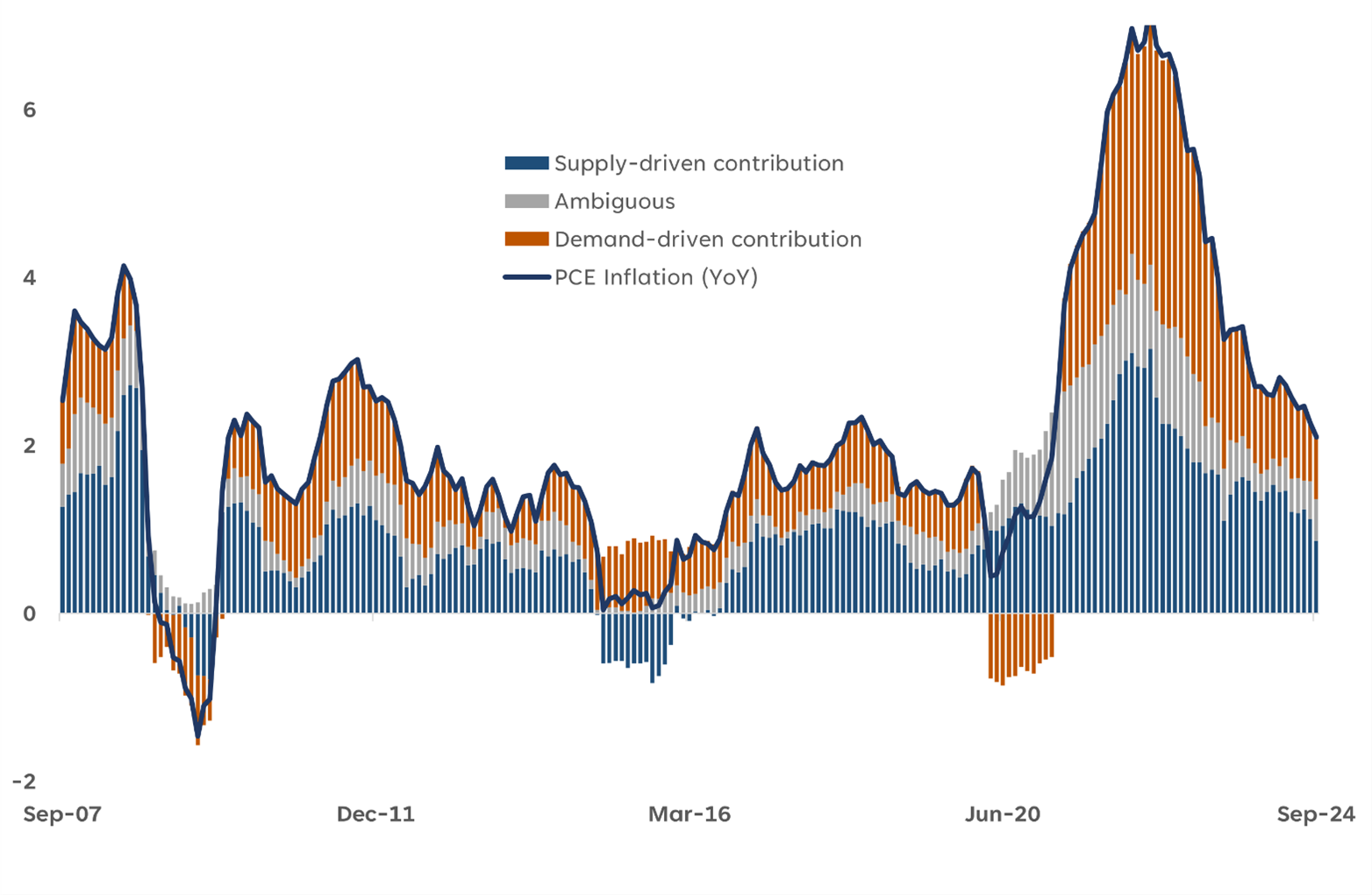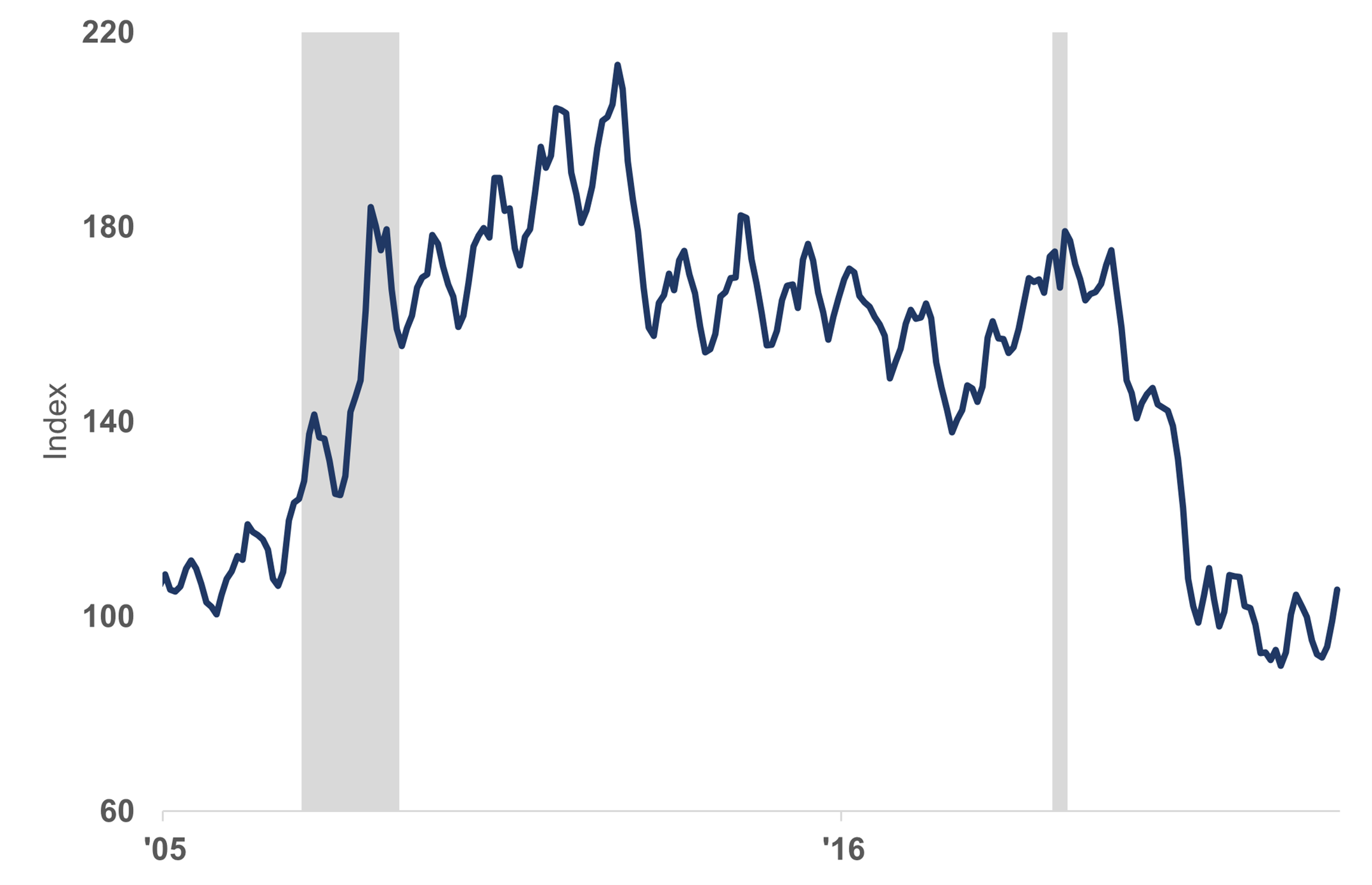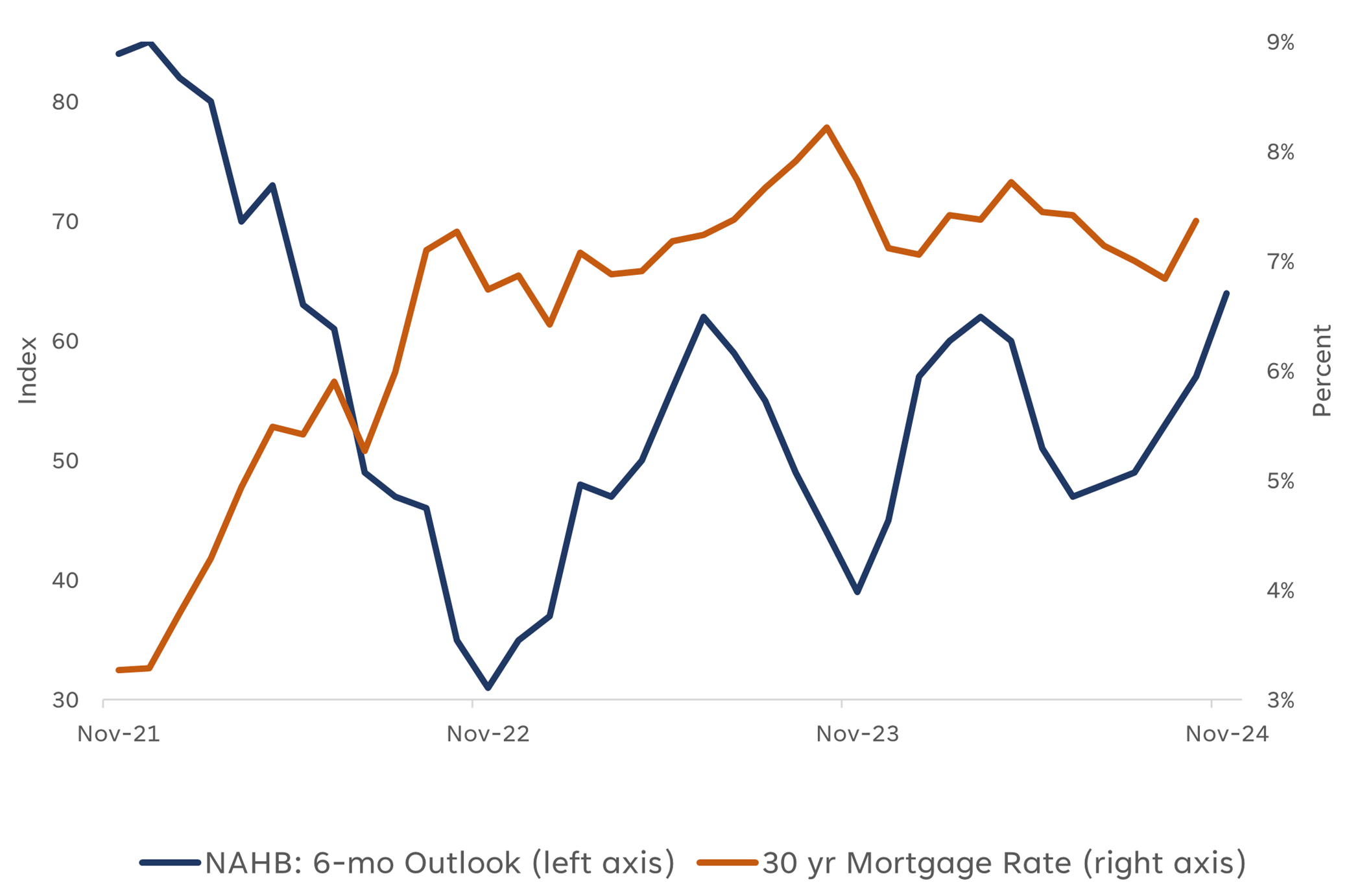SFS Inisights: 5 Things About the Economy to be Thankful For
The 2024 calendar year is coming to a close after a very eventful year. As the dust settles on 2024, it’s important to think about the positive notes we are ending the year on. Here are five things about the economy to be thankful for.
1. Well-Greased Supply Chains, Especially in Light of Upcoming Holiday Sales
Over the last few years, supply chains have started to work very well, moving back towards pre-pandemic numbers. This is a good sign, as supply constraints had been a major driver of the Personal Consumption Expenditures (PCE) deflator, the Federal Reserve’s (Fed) preferred inflation metric. In recent months, businesses have been able to manage inventories, especially important with the holiday season coming. We could expect middle- and upper-income households to drive consumer spending.
Fewer Supply Constraints Should Soften Inflation Pressures
Pressure on Supply Chains are Below Average

Source: LPL Research, U.S. Bureau of Labor Statistics, Federal Reserve Bank of San Francisco 11/20/24
2. Improved Housing Affordability (because of higher incomes)
For the first time since early March, the Housing Affordability Index rose above 100 (higher is better). A value of 100 means a buyer with median income has just enough to qualify for a mortgage on a median-priced home. Existing home sales have risen slowly over the last month, but the pace of sales is still below pre-pandemic rates. As wages and income outpace the rate of inflation, households have a bit more capacity to enter the real estate market despite elevated prices.
Housing Affordability Improved Last Month
Growth in Median Income Is the Driving Force

Source: LPL Research, National Assoc of Realtors, 11/22/24
3. Increased Traffic of Prospective Home Buyers
Homebuilders upgraded their six-month outlook on residential real estate after observing increased traffic of prospective buyers. Low inventory and high mortgage rates have made prospective home buyers hesitant to commit in an uncertain market. However, now that the Fed has cut interest rates and the job market is stable, prospective buyers have emerged, giving a lift in the residential construction market.
Prospective Buyer Traffic Improved Recently
Homebuilders Have Upgraded 2025 Outlook

Source: LPL Research, Natl Assoc of Home Builders, Bankrate, 11/20/24
4. Rate Cuts That Will Likely Continue in 2025
In September the Fed ended the most aggressive rate-hiking cycle in decades. Since then, the Fed has cut rates by a total of 75 basis points (bps), and we expect these cuts to continue in 2025. The market originally anticipated an aggressive rate-cutting cycle throughout 2024-25, but with economic data coming in better than expected, those expectations are coming down. In our view, after weeks of markets pricing in too many rate cuts throughout 2025, Fed rate cut pricing is now better aligned with economic data. Currently, markets still expect the Fed to cut rates below 4% by the end of 2025.
5. Lower Inflation
The U.S. is coming off some of the highest inflation rates since the 1990s. The Federal Open Market Committee (FOMC) is doing what it can to get to its current goal of a 2% level of inflation.
Prices rose 0.2% from a month ago, the same monthly pace as July, August, and September as inflation is finding its balance. Clothing, communications, and household furnishings decreased in October, but shelter, used vehicles, airfare, and medical care rose during the month.
Meat, fish, and egg prices fell over 1.2%, the largest monthly decline since May 2023, easing pressure on household budgets. The sticky components of inflation continue to ease, giving the Fed some leeway to cut rates over the next 12 months. The strength of some cohorts of consumers is keeping upward pressure on prices as consumer spending hasn’t slowed yet. Stronger-than-expected economic growth is likely keeping bond yields elevated alongside prospects of protectionist trade policy and continued deficit spending.



